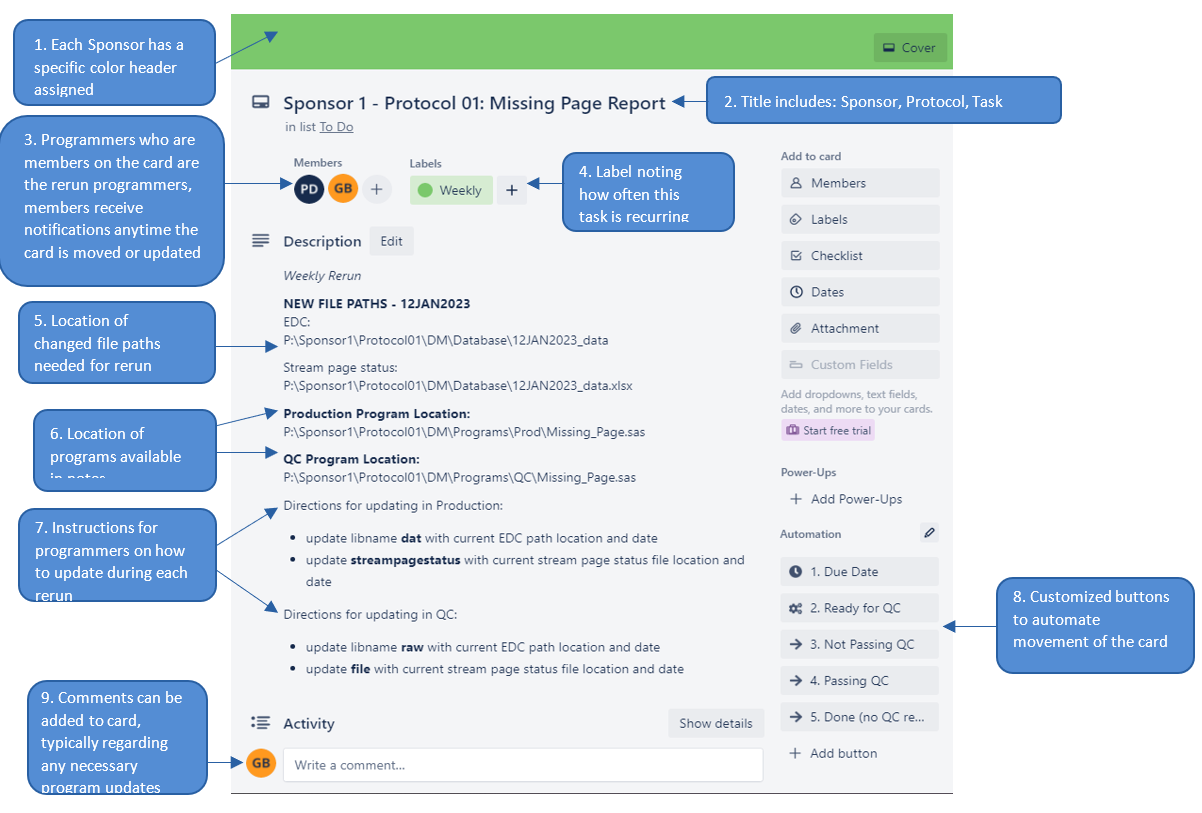In a CRO environment, managing Data Management programming requests presents significant challenges, including prioritization, resource planning, and timely delivery of results. There are a set of recurring tasks, coming from multiple sponsors, with varying frequencies and updates needed. Programmers need a way to keep these tasks organized and to optimize the work flow.
At PROMETRIKA, our statistical programmers continually refresh and increase their knowledge of technical and enterprise tools that improve quality and efficiency in their day-to-day work. Encouraged by management to develop new strategies, we make process improvement a regular part of our work. With a background in Computer Science, I aim to leverage my perspective into to new ways of thinking; here this means, applying Agile methodologies, a type of project management typically reserved for software engineers, onto statistical programming.
Patrick Dowe (Statistical Programmer III) and I were tasked with finding a solution to these challenges on the Production side. We discussed my interest in using Agile methodologies to innovate and Patrick’s past experiences working in Agile. We decided we would implement Agile methodologies, using Trello™ to generate and optimize Kanban boards. The goal was to improve workflow, communication, and automation for these recurring SAS programming tasks for Data Management.
Patrick had been using a manual approach, relying on a whiteboard and sticky notes to organize tasks, which limited accessibility and information capacity, and was prone to errors. Inspired by Patrick’s sticky note system, we decided to leverage our backgrounds and create a digital Kanban board. A Kanban board is a visual representation of the task life cycle, featuring columns for each phase of the work flow and individual cards to represent each task. Trello provides a customizable platform for managing these tasks and workflows.

Cards moved through the workflow stages as tasks progressed from initiation to completion. Automation features in Trello facilitated the movement of cards and triggered notifications to team members.

We were able to test out this methodology and flush out all of the problems with a small team to see if the concept worked in practice. We found that it did, as the visual representation and documentation made the work much easier to share between programmers with varying availability. The automations built into our board helped keep communication open, as most of it was now being automatically generated so no one was left wondering about the status of a task. The collaboration between Production programmers and QC programmers improved through clear communication and shared access to information. This pilot was very successful and we hope to scale it up and apply it to different types of projects and work.
After presenting this paper at PharmaSUG 2023, we engaged in many conversations with conference attendees about Agile, Trello, and Jira™. These methods and tools are becoming increasingly popular and continue to draw interest at conferences as companies find new and different applications. Patrick and I have enjoyed applying our prior knowledge of Agile and Trello to this field and plan to continue expanding this application.
If you are interested in reading our full paper, you can find it here.



